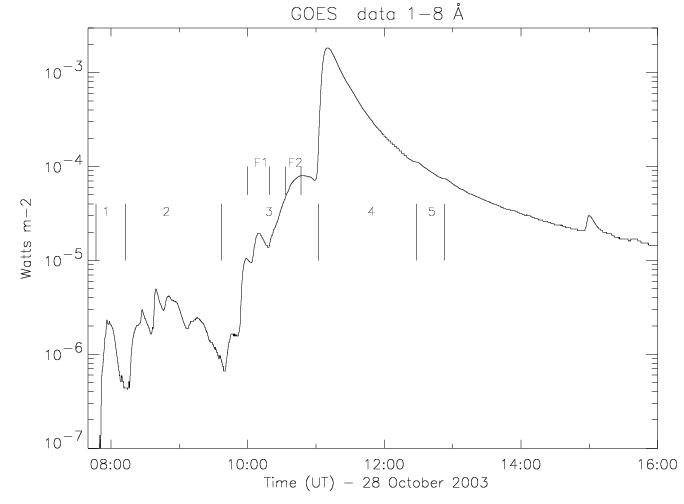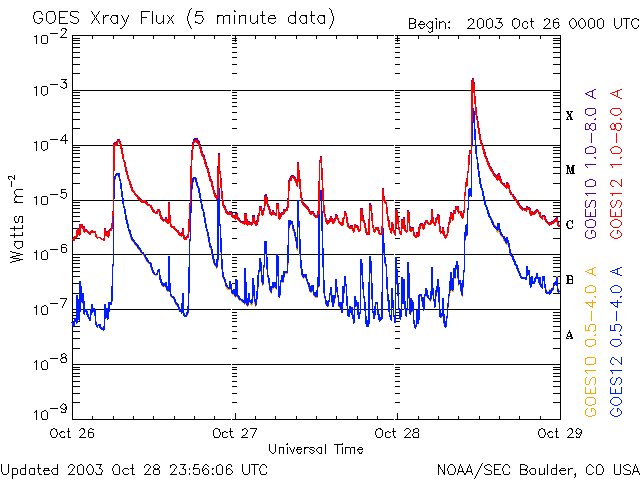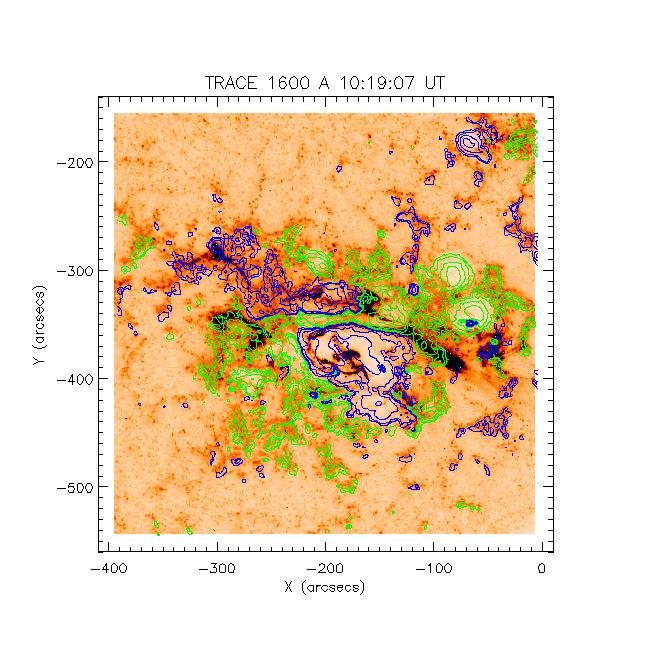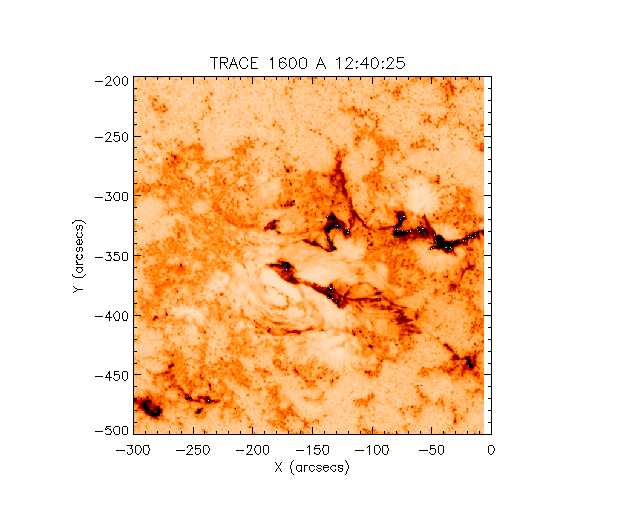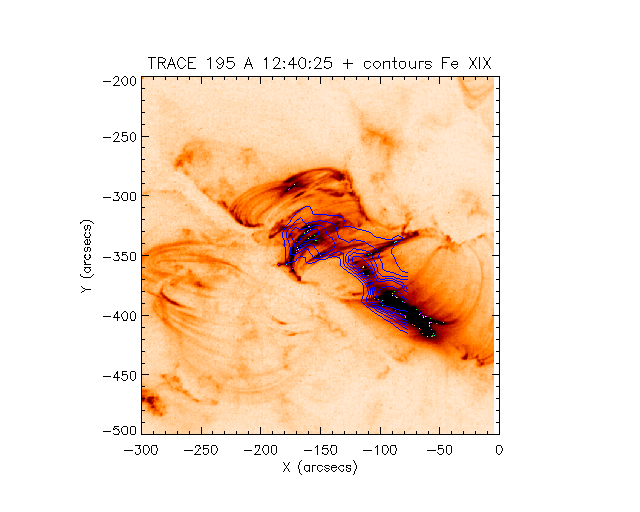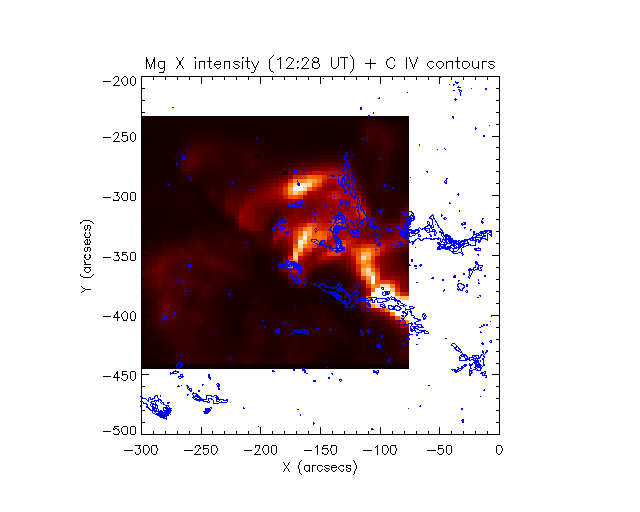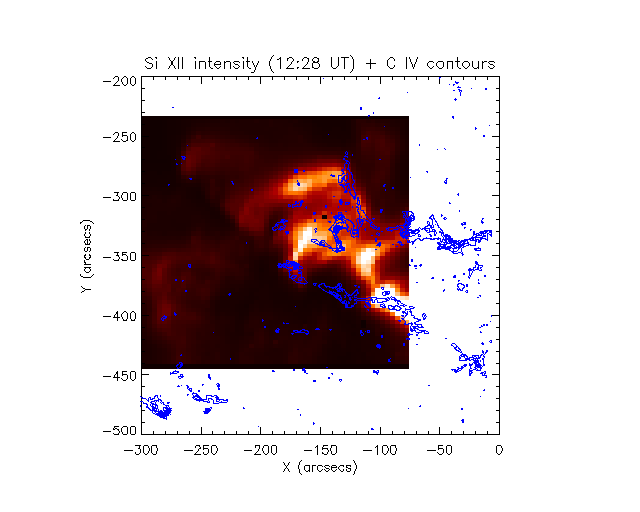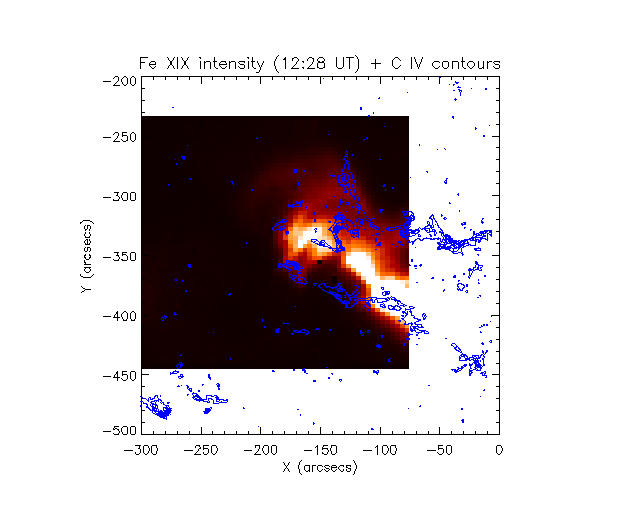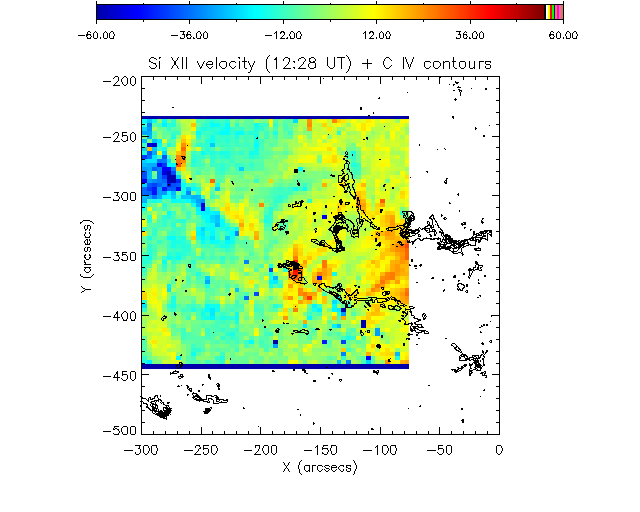article
1 Overview
Figure 1: Time evolution of the GOES X-ray fluxes.
Here we focus on the October 28, 2003 X17 flare.
In the bottom plot, the timings of the 5 successive CDS rasters
are indicated.
CDS observed the two precursor M-class flares F1 and F2
with the third raster.
2 The two pre-events, M-class flares
SOHO CDS observed with the 3rd raster during
09:37-11:02 UT.
CDS observed two distinct M-class flares,
with strong Fe XIX emission
(saturated in the two cores).
The first one (F1) was observed during 10:00-10:19 UT,
while the second (F2) during 10:33-10:47 UT.
The first flare was also observed by TRACE.
Figure 2: Sequence of TRACE 195 Å images, showing
the two M-class flares. Between 10:24 and 10:49 UT
TRACE did not observe. Note the contours of Fe XIX
emission of the two flares observed by CDS.
Figure 3: Sequence of TRACE 1600 Å images, showing
the two M-class flares. Between 10:24 and 10:49 UT
TRACE did not observe.
Figure 4: TRACE 195,1600 Å
with contours from SOHO/MDI magnetogram.
The M-class flare occurred in the region of mixed polarity.
Note also the filament eruption associated with this flare.
Figure 5: SOHO/MDI magnetogram.
Figure 6: CDS monochromatic images at transition region
(O V), coronal (Mg X) and flare (Fe XIX) temperatures, during the
long CDS scan which observed the two F1,F2 M-class flares.
Overlaid are contours of TRACE 1600 Å.
Notice the complex structure of the second flare (left) in the
enhanced Fe XIX image.
3 The X17 flare
Figure 7: Sequence of TRACE 195 Å images
during the X17 flare. The first three images are
shown with a different intensity scale, compared to the
following ones.
Post-flare arcade
Here we show results concerning the 5th CDS observation
(12:28-12:52 UT). During this time,
TRACE 195 and 1600 Å images show that the 2-ribbon
structure and the arcade of loops is approximately stationary,
with some apparent flows along the loops.
Figure 8: Top: TRACE 195 Å with contours of CIV.
Bottom: TRACE 1600 Å
Figure 9: Top: SOHO/MDI magnetogram with contours of CIV (showing the ribbons).
Bottom: TRACE 195 Å with contours of Fe XIX intensity from CDS.
The contours show the hottest regions, where most TRACE
emission is dominated by Fe XXIV.
Figure 10: CDS intensity maps with contours of CIV (showing the ribbons).
The post-flare loops show emission at all temperatures
Figure 11: CDS velocity map in the transition region (O V)
with contours of CIV (showing the ribbons).
Strong downflows (v @ 50-100 km/s ) in the ribbons
are observed.
Figure 12: CDS velocity maps in coronal lines
with contours of C IV (showing the ribbons).
Strong downflows (v @ 50-100 km/s ) in the ribbons
are observed.
- The X17 flare presented great complexity.
We have used the CDS to understand the temperature
structure of the various events.
-
Two precursor M-class events have been observed with CDS.
The first one was also observed by TRACE, while the second,
more important one, was not observed by TRACE.
The second one had a complex structure of hot loops.
-
During the precursor events the filament
becomes activated.
-
During the X17 flare the ribbons quickly separate
and an arcade system of loops forms.
These loops are multi-thermal, with the
hottest part in the central region.
-
Strong downflows (v @ 50-100 km/s ), in
particular at transition region temperatures
are observed in the ribbons.
File translated from
TEX
by
TTH,
version 3.08.
On 14 Apr 2005, 15:46.
